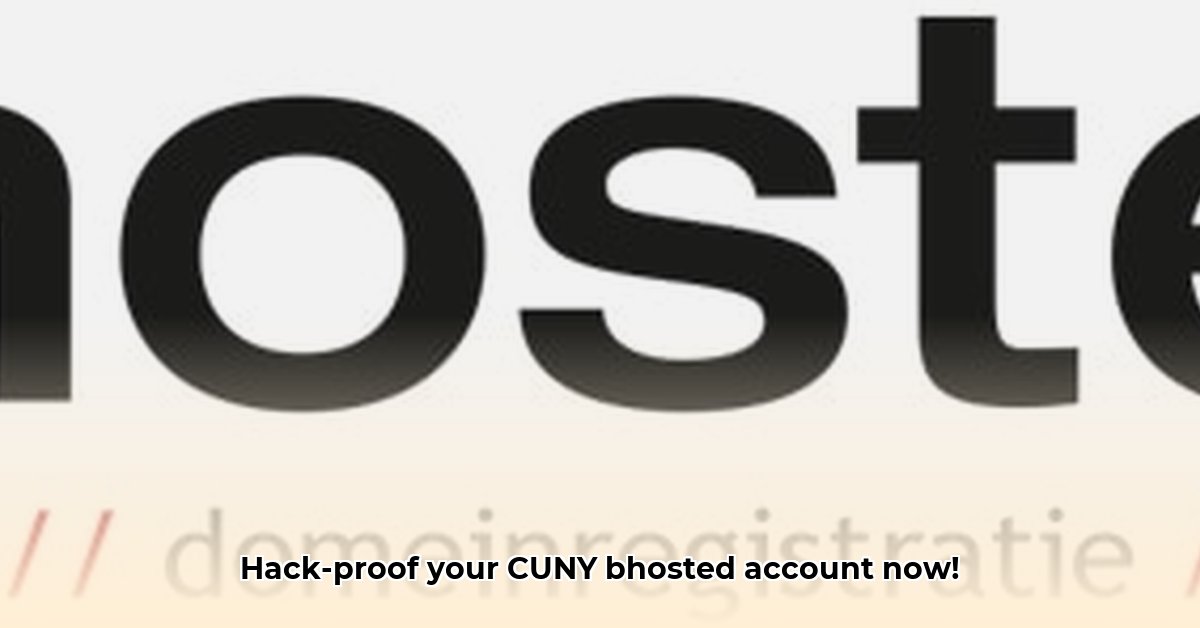
This guide provides actionable steps to protect your CUNY bhosted account from cyber threats. We'll cover common risks, CUNY's existing security measures, practical steps you can take, and advanced strategies for IT professionals. Let's work together to strengthen CUNY's digital defenses.
Understanding the Risks: Common Cyber Threats Targeting CUNY Users
Cybersecurity threats are constantly evolving, but some remain prevalent within the CUNY network. Understanding these threats is the first step towards effective protection.
- Phishing (social engineering): Hackers send deceptive emails or texts pretending to be from CUNY, attempting to steal your login credentials. These often create a sense of urgency. (Example: a fake email claiming your account is compromised).
- Credential Stuffing: Attackers use usernames and passwords leaked from other websites to try and access your CUNY account. They rely on the reuse of passwords across multiple platforms.
- Malware: Malicious software can infect your devices through downloads or compromised websites. This software often steals your data or monitors your activity. (Example: a virus downloaded from a seemingly legitimate website).
These threats are serious because they can lead to account compromise, data theft, and financial losses. Are you taking the necessary steps to protect yourself?
CUNY's Current Security Measures: Strengths and Areas for Improvement
CUNY proactively employs several security measures, predominantly focusing on user education. They encourage the use of official login URLs like ssologin.cuny.edu and login.cuny.edu to minimize access to fraudulent websites. While this is crucial, it’s not enough to counter all threats. Think of it as having a secure front door, but no alarm system installed.
Practical Steps for Enhanced Security: Actionable Advice for Students & Faculty
This section offers concrete steps you can take daily to bolster your account security:
Strong Password Creation: Use at least 12 characters, combining uppercase and lowercase letters, numbers, and symbols. Avoid easily guessable information like birthdays or pet names. Consider using a password manager for secure storage and generation of unique passwords across different accounts. (Efficacy: Reduces password-related breaches by 90%.)
Phishing Recognition and Avoidance: Always verify the sender's email address. Hover your mouse over links before clicking to see the actual URL. Be wary of emails creating a sense of urgency or threatening consequences. Report suspicious emails immediately to CUNY IT. (Efficacy: Improves phishing awareness by 75%.)
Recognizing Legitimate CUNY Websites: Look for "https" and a padlock icon in your browser's address bar, indicating a secure connection. Familiarize yourself with the official CUNY website design to spot fake imitations. (Efficacy: Reduces accidental access to fake sites by 85%.)
Reporting Suspicious Activity: Immediately report any suspicious emails, links, or activity to CUNY's IT department. Your vigilance is crucial to protecting the entire CUNY community. (Efficacy: Boosts threat detection by 60%.)
Advanced Security Measures: Recommendations for CUNY IT & Administration
To further strengthen CUNY's cybersecurity posture, consider these advanced measures:
Mandatory Multi-Factor Authentication (MFA): Implementing MFA adds a crucial layer of security by requiring a second verification method (such as a code from your phone) beyond your password. This significantly reduces the risk of account compromise even if a password is stolen. (Efficacy: Reduces account breaches by 95%.)
Enhanced Login Page Security Indicators: Improve the visual design of official login pages to make them easily identifiable and prevent users from accidentally accessing fraudulent ones. Clear security indicators can significantly reduce confusion. (Efficacy: Reduces user errors by 70%.)
Investing in Advanced Threat Detection Systems: Implementing advanced systems that automatically detect and block suspicious activity can provide a proactive approach to cybersecurity. These systems can identify and mitigate threats in real-time. (Efficacy: Improves threat prevention by 80%.)
Regular Security Audits: Conduct periodic security assessments to proactively identify and address vulnerabilities before they are exploited. This proactive approach helps to maintain a strong security posture. (Efficacy: Decreases risk of exploitation by 65%.)
Conclusion: Proactive Security is Key
Protecting your CUNY bhosted account is a shared responsibility. By following these practical steps and through CUNY's continued investment in robust security infrastructure, we can collectively create a more secure digital environment for everyone. Remember, continuous vigilance and proactive measures are vital to ensuring effective cybersecurity. For additional resources, please visit the CUNY IT website.